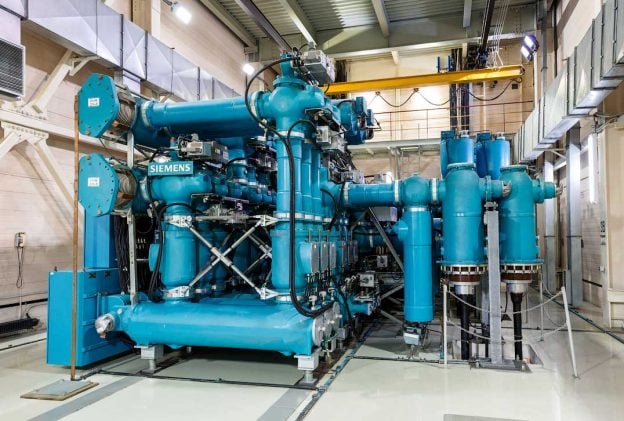Course Description
This course covers the essentials of a Gas-Insulated Switchgear, or shortly ‘GIS‘, that every electrical engineer who deals with power substations and electrical equipment in the field should know. You will learn all major equipment installed within GIS, such as circuit breaker or switch, disconnector, grounding switch, current and voltage transformers, busbars, busducts and interconnecting parts, SF6 gas-to-air bushing, cable box/cable sealing, power transformer interface chamber/bushing, and surge arrester.
It is important for an engineer to have a basic understanding of the basic GIS components and layout/diagrams of the GIS and GIS equipment being dealt with. This is essential you must learn before entering any substation where GIS is installed and operational.
Topics discussed in this course
The following topics will be discusses in this course:
- Introduction to Gas Insulated Substation
- Comparison of AIS Vs GIS
- Installation
- GIS Operation
- GIS Maintenance
- Total Cost of Ownership
- Circuit Breaker
- Pole Marking
- Interrupter Unit
- Single & multiple interrupter
- Why it is required to add interrupter unit
- Why interrupter units are added in series
- Single mechanism for each pole and single mechanism for each pole
- Pole Discrepancy
- Arc Quenching
- Circuit Breaker Chamber details
- Circuit Breaker Operating Mechanism
- What is SF6 electronegativity?
- Why speed of circuit breaker is important for arc quenching?
- CB fixed and moving contacts
- Why too fast CB closing create problems?
- Pole synchronization & allowable tolerance
- Hydro Mechanical system, latest technology
- CB Aux contacts
- Puffer interrupting Units
- Self-blast interrupting Units
- Why arc quenching depend on current in self-blast circuit breaker.
- Thermal Chamber in CB interrupter unit
- GAS Tight & Gas Permeable Insulators
- Gas Compartment
- Marking of Gas Compartment
- Review Gas Diagram
- Gas Monitoring Devices
- SF6 Alarm & Lock Out Stage
- Inspection Window
- Steel Structure
- GIS Earthing
- Current Transformer
- Basic definition of current transformer
- Multi Ration & Multi Core CT’s
- CT Polarity
- Primary and secondary windings
- Why Polarity is very important
- CT Protection and metering cores
- Rating of CT
- Voltage Transformer
- Definition of VT
- Multi core VT
- Rating of VT
- Class of VT, Protection and Metering
- Location of VT in SLD
- Surge Arrestor (SA)
- Surge Counter
- Construction of Surge Arrestor
- Maintenance & Monitoring of SA
- Grading Electrode of SA
- Isolator & Earth Switch
- Mechanical and Electrical Interlocking
- Busbar isolator and busbar earth switch interlocks
- Use of earth switches for performing primary injection test
- Difference between normal earth switch and high speed earth switch
- SF Air Bushing
- High Speed Earth Switch
- Where high speed earth switch is used?
- Local Control Cubicle
- Local / Remote Control
- Alarms on LCC
- Mimic
- Trip Circuit Supervision indication
- Marshaling Kiosk (MK)
- Busbar
- Bonding
- Cable Compartment
- Cable Sealing End
- SF6 Gas
- Properties of SF6 Gas
- Insulation level of SF6 compare to air
- Impact pressure on SF6 insulation ability
- Purity and dew point test
- Leakage test / Gas Tight test
- Leakage Detector
Who Is This Course For
- Practicing power system engineers
- Substation engineers
- Maintenance staff
- Electrical engineering students planning on pursuing a career in power engineering
- Power System Protection Engineers
Requirements
- Knowledge of basic substation terms
- A basic understanding of power systems
- Desire to learn
Downloadable course materials
After purchasing the course, students can download the following PDF documents:
- The basics of Gas Insulated Substation (GIS) for students
- 400/220 kV gas insulated (GIS) transmission substation controlled by SCADA
- Technical Specification For 220kV SF6 Gas Insulated Metal Enclosed Switchgear (GIS)
- The basics of high voltage switching equipment in power substations and switchyards
Course Content
About Instructor


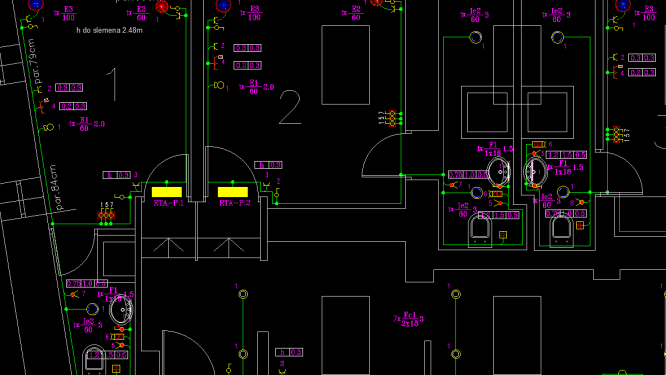 Electrical Designing and Drafting Bundle (Two Courses)
Electrical Designing and Drafting Bundle (Two Courses)  Low-Current Installations: Fire Alarm, CCTV, Data, Telephone, Sound and MATV Systems
Low-Current Installations: Fire Alarm, CCTV, Data, Telephone, Sound and MATV Systems  Mastering Transformer Vector Groups: Learn How To Analyze and Draw Windings Connections
Mastering Transformer Vector Groups: Learn How To Analyze and Draw Windings Connections 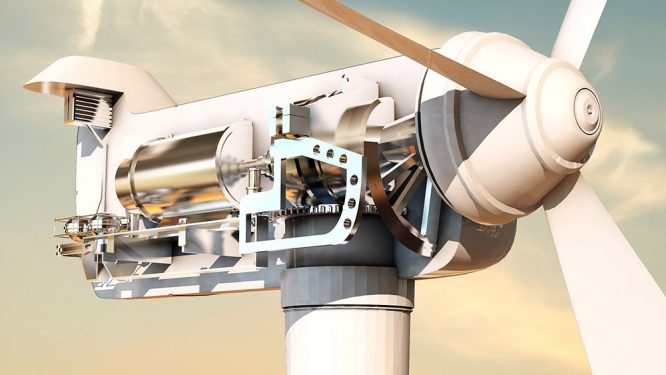 Learn Wind Power Systems: Beginner To Intermediate Level Training Course For Engineers
Learn Wind Power Systems: Beginner To Intermediate Level Training Course For Engineers  Digital Protection Course: Structure and Relay Operation Techniques
Digital Protection Course: Structure and Relay Operation Techniques  The Essentials of Capacitor Banks: Connections, Calculations and Relay Protection
The Essentials of Capacitor Banks: Connections, Calculations and Relay Protection 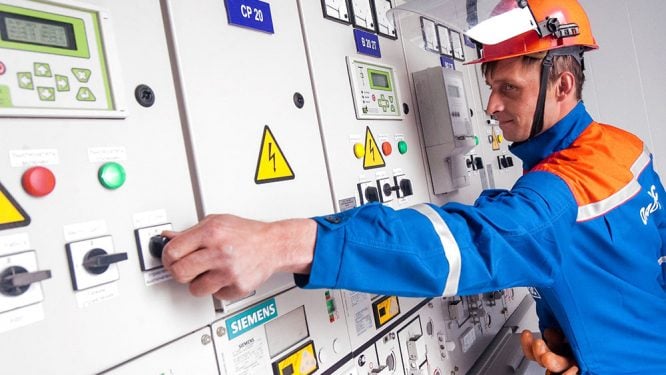 Power Engineering Course: Relay Control and Protection For LV/MV/HV Switchgear
Power Engineering Course: Relay Control and Protection For LV/MV/HV Switchgear  Learn How to Depict Switchgear and Substation Single-Line Diagrams
Learn How to Depict Switchgear and Substation Single-Line Diagrams  Relay Protection Course: Implementation of Digital Logic and Schemes in Protective Relays
Relay Protection Course: Implementation of Digital Logic and Schemes in Protective Relays  Overcurrent Protection Course: Principles, Relays, Schematics and Settings
Overcurrent Protection Course: Principles, Relays, Schematics and Settings  Gas-Insulated Switchgear Course: Design, Installation, Operation and Maintenance, Testing
Gas-Insulated Switchgear Course: Design, Installation, Operation and Maintenance, Testing  Design Course For Solar Energy Systems (Off-Grid, On-Grid, Protection and Simulation)
Design Course For Solar Energy Systems (Off-Grid, On-Grid, Protection and Simulation)  Power System Protection for Students (Generator, Line and Transformer Schemes Explained)
Power System Protection for Students (Generator, Line and Transformer Schemes Explained)  Fundamentals of Generating High Voltage Levels in AC/DC Power Systems
Fundamentals of Generating High Voltage Levels in AC/DC Power Systems  The Power Substation Fundamentals Course
The Power Substation Fundamentals Course  Relay Control and Protection Bundle: Complete Relay Circuitry and Schematics (Five Courses)
Relay Control and Protection Bundle: Complete Relay Circuitry and Schematics (Five Courses)  Generator Protection Course: Concepts, Applications and Relay Protection Schemes
Generator Protection Course: Concepts, Applications and Relay Protection Schemes  Practical Course to Power System Operation, Control, Stability, and Optimization
Practical Course to Power System Operation, Control, Stability, and Optimization  Learn AC Distribution Panel Drawings: Single-Line Diagrams, Wirings, and Interlocking Schematics
Learn AC Distribution Panel Drawings: Single-Line Diagrams, Wirings, and Interlocking Schematics  Course to Relay Circuitry and Understanding Control and Protection Schematics
Course to Relay Circuitry and Understanding Control and Protection Schematics  Design Course For Wind Energy Systems: Specification, Construction and Examples
Design Course For Wind Energy Systems: Specification, Construction and Examples 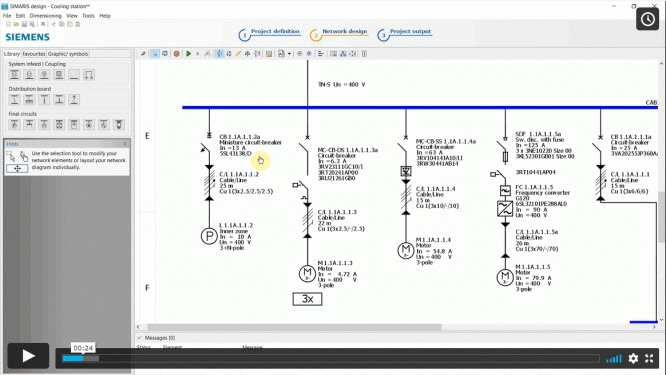 Low Voltage Power Calculations in SIMARIS Design Tool
Low Voltage Power Calculations in SIMARIS Design Tool  Learn How to Perform Calculations of Electrical Loads and Design the Protection System
Learn How to Perform Calculations of Electrical Loads and Design the Protection System 
